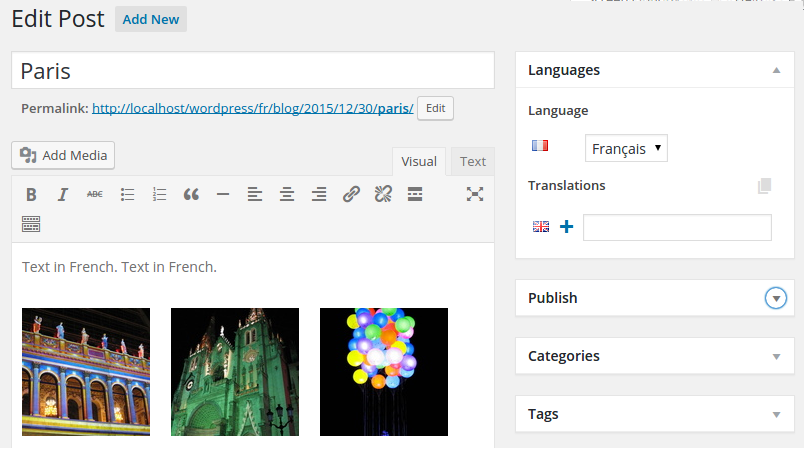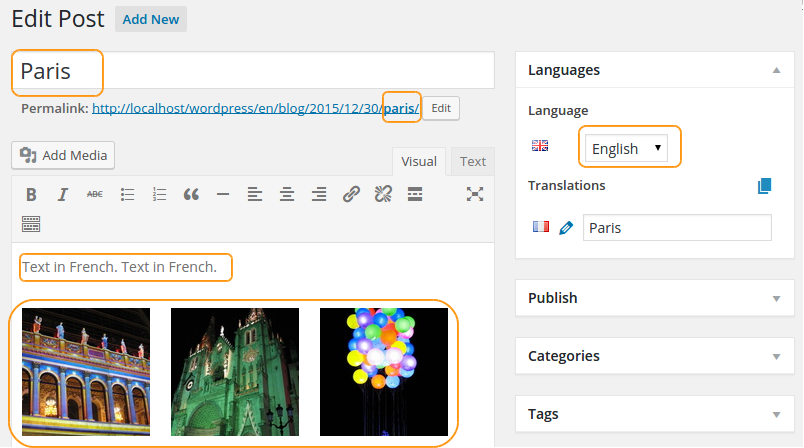We are going to walk through the ‘Duplicate content’ feature available in Polylang Pro.
This feature duplicates the title, the content (text, media, gallery) and the excerpt. The example shown below is for Posts but the duplication works the same way for pages and custom post types.
Note: other types of content (taxonomies, featured image, custom fields, page order and template…) are automatically copied whether this option is activated or not.
1. Create some content
Let’s say that you have created a post ‘Paris’ with some media (here a gallery).
2. Activate the ‘Duplicate content’ option
Activate the duplication feature by clicking on the icon in the Languages metabox. The icon will turn to blue (depending on your admin theme). This choice is persistent, meaning that the content duplication is now activated for all posts of this post type. You can de-activate the feature by clicking on the same icon again.
Click on the icon to generate the English post translation.
3. The resulting duplicated content
As you can see below, Polylang has automatically copied all the content from the French post into the English post translation. You can choose to modify or not this content.
The title, the text of the post content and the excerpt are duplicated. Regarding the media included in the post content, Polylang brings the translations from the Media Library. If these translations don’t exist yet, they are automatically created during the duplication operation. The same for the taxonomy terms. You still have to translate the media titles, captions and alternative texts if needed.
If you don’t need to translate all your media, we recommend that you deactivate the ‘Automatically create all translations at upload’ option to create the media translations only when needed, using the ‘Duplicate content’ feature.
 Polylang
Polylang 
